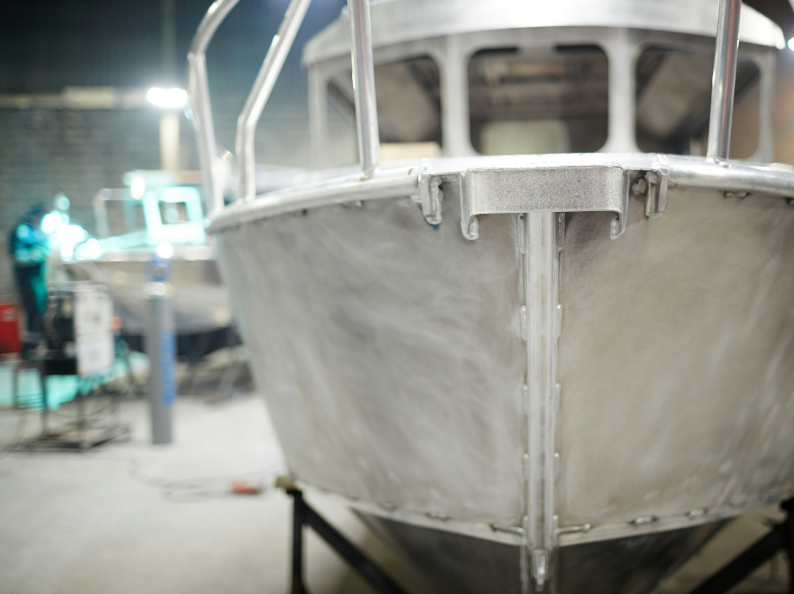Complete Boat Refit: When Is It Necessary?

Sailing can be one of the most rewarding experiences, yet it also exposes vessels to various environmental and physical factors that can inflict significant damage over time. Determining when a boat requires mere minor repairs or a complete refit is crucial for maintaining its safety, functionality, and value. In this article, we explore how experts at boatyards in Barcelona assess damage on boats and decide the need for a full refit, ensuring that owners make informed decisions that maximize both the longevity and performance of their vessels.
What is a complete refit?
A complete refit involves an extensive and deep renovation that can range from updating mechanical and electrical systems to a full interior overhaul, as well as treating and repainting the hull. This process not only restores the vessel to its former glory but often enhances it with new technologies and design solutions that increase its durability and functionality.
Initial damage assessment
Detailed visual inspection
Every evaluation process begins with a meticulous visual inspection, where qualified experts look for obvious signs of wear such as cracks in the hull, areas of osmosis in fiberglass boats, and corrosion in critical metal components. They also review the state of the antifouling paint and any signs of structural damage that might have been caused by collisions, grounding, or simply the prolonged stress of water and weather.
Advanced diagnostic tests
After a visual inspection, more complex and diagnostic tests are conducted. These may include:
- Ultrasound: To measure the thickness of the hull and detect thinned sections due to corrosion or damage.
- Moisture tests: To identify areas of water retention that could indicate osmosis or delamination in fiberglass hulls.
- Structural analysis: To assess the overall integrity of the boat and detect non-visible structural weaknesses.
These tests are essential for determining the real extent of damage and the urgency of necessary repairs, providing a solid foundation for deciding between targeted repairs or a complete refit.
Factors influencing the decision for a complete refit
Age and general condition of the boat
The age of the boat is a determining factor, as older vessels often require complete refits to update components that no longer meet modern safety or efficiency standards. The general condition of the boat also plays a crucial role; a well-maintained boat might need less intervention than one that has been neglected.
Cost-Benefit analysis
The decision between making specific repairs or a complete refit also involves a cost-benefit analysis. If minor repairs are extensive and their cost approaches that of a complete refit, which would additionally add more value and longevity to the boat, opting for a refit may be the most economical and practical decision in the long run.
Intended use of the boat
The intended use of the boat significantly influences this decision. A boat used for extensive cruising and challenging maritime conditions will benefit more from a complete refit that ensures maximum safety and functionality, compared to one used occasionally for calm water outings.
Complete refit process
Planning and design
This process begins with an exhaustive planning phase, which defines the scope of the project and selects materials and improvements to be made. It is crucial that this stage aligns with the owner’s needs and expectations, as well as current safety and quality standards. During planning, delivery timelines are established, logistics are planned, and various work teams are coordinated. Detailed analyses of existing boat plans are performed, and modifications in the design are made to incorporate new technologies or specific features requested by the owner. Critical decisions about material selection are made during this time, such as choosing between traditional woods or advanced composites for carpentry, or between state-of-the-art electronic systems for upgrading navigation and communications. All current maritime regulations are considered to ensure the vessel is not only aesthetically pleasing but also fully safe and operational under international standards.
Execution
The execution of a complete refit is a complex project that may require the involvement of multiple specialized teams working on different areas of the boat, from mechanical engineers to interior designers and electronic systems specialists. Carpenters, welders, and painters also play vital roles, each addressing their respective tasks with precision and care. This phase involves extensive coordination to ensure that work flows smoothly and deadlines are met. The success of the execution phase depends on effective and constant communication among all teams, as well as detailed supervision to detect and solve any issues that might arise during the refit. A meticulous record of progress is kept, and plans are adjusted as needed to accommodate technical challenges or delays in material delivery.
Final testing and delivery
Once the refit is completed, thorough testing is conducted to ensure that all systems operate correctly and that the boat is ready to be returned to the owner. These tests are vital to ensure that the vessel is not only safe and operational but also meets or exceeds the owner’s expectations. Tests include, but are not limited to, engine tests both in dry dock and at sea, testing of all electronic and navigation systems, and a final inspection of the quality of interior and exterior finishes. Any deficiencies are corrected before the final delivery. Additionally, the owner is provided with detailed training on the operation of the new systems and equipment, ensuring they feel confident and comfortable with all the enhancements made. Only after all these stages are satisfactorily completed is the vessel officially handed over to the owner, marking the end of a thorough and successful refit.
Making the right decision, refit or not to refit?
Deciding whether to undertake a complete refit is a significant decision that requires a detailed and considered evaluation of the damage, the general condition of the boat, and the long-term goals of the owner. In the boatyards of Barcelona, experts are equipped to guide owners through this decisive process, ensuring that each boat is not only safe and functional but also meets their performance and aesthetic expectations. This comprehensive approach not only protects the investment but also preserves the passion for sailing.





